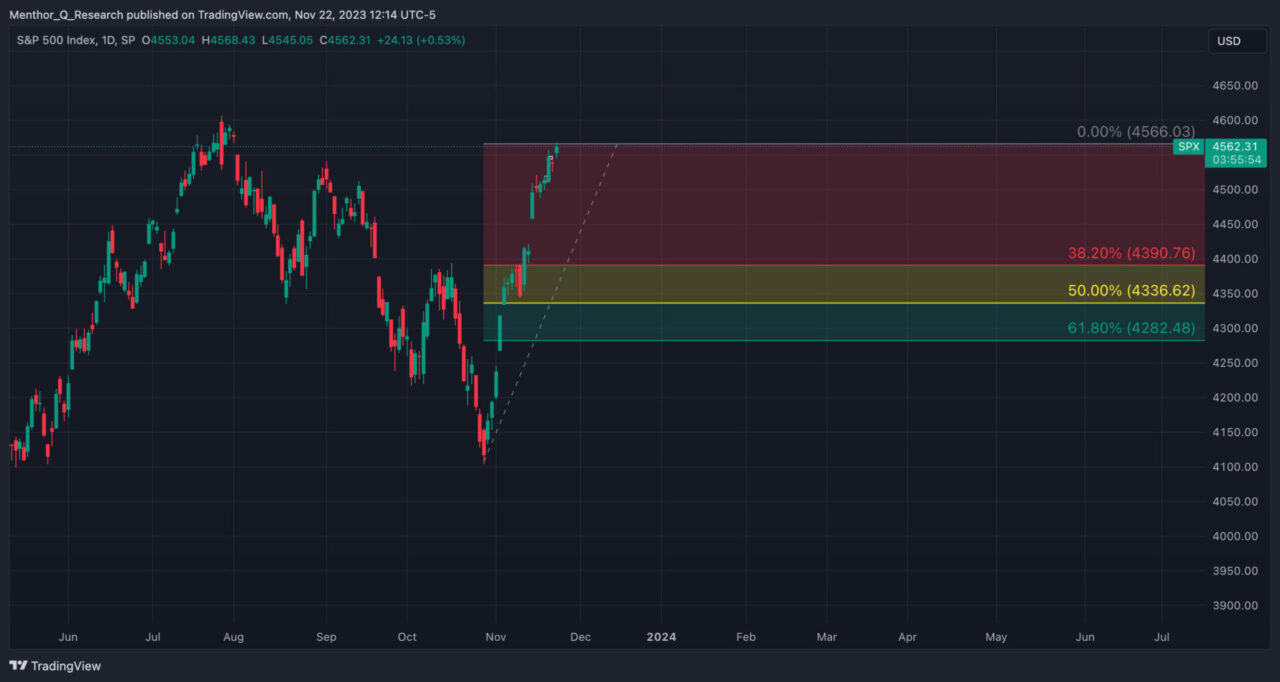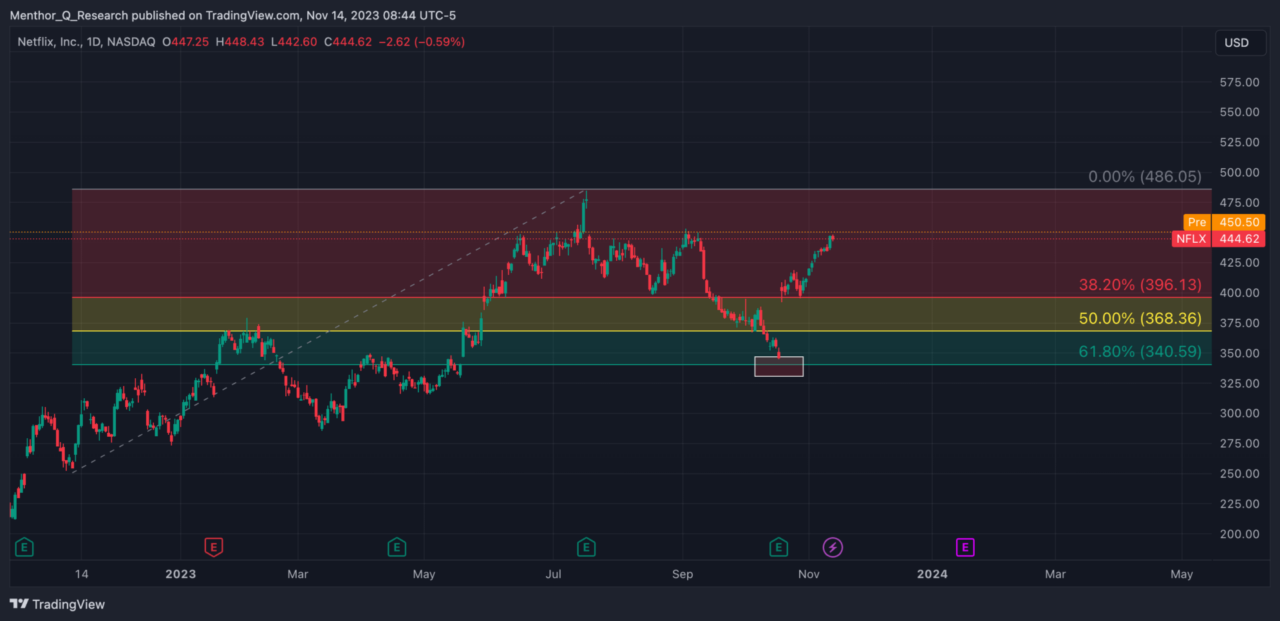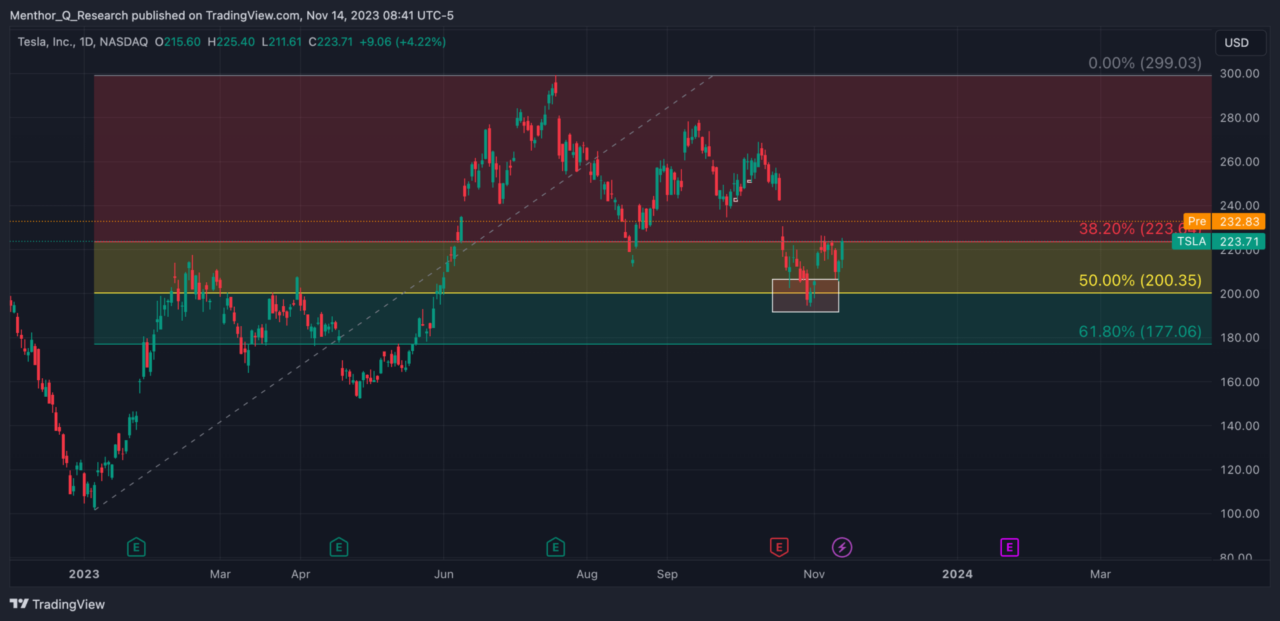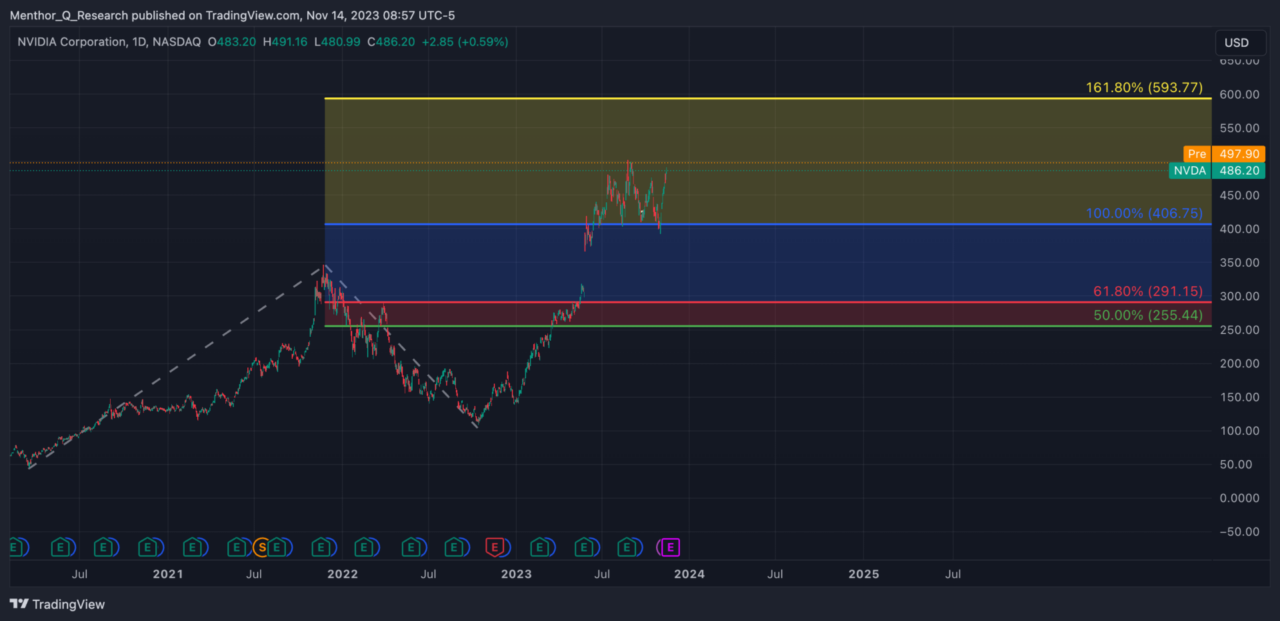Fibonacci Retracements

In this article we will talk about Fibonacci Retracements and Extensions and how you can incorporate this indicator into your trading.
Understanding Fibonacci Retracements in Trading
Fibonacci retracements are a popular tool used in technical analysis, predicated on the key numbers identified by mathematician Leonardo Fibonacci in the 13th century. The Fibonacci sequence starts with 0, 1, and each subsequent number is the sum of the previous two.
The sequence itself does not directly apply to trading, but the mathematical relationships between these numbers yield ratios, and it’s these ratios that are of special interest to traders.
The Golden Ratio
The Key Fibonacci ratio of 61.8% – referred to as the ‘Golden Ratio’ – is found by dividing one number in the sequence by the next one (e.g., 34/55 or 55/89). Interestingly, the 38.2% ratio is obtained by dividing a number in the sequence by the number two places to the right (e.g., 34/89), and the 23.6% ratio by dividing by the number three places to the right (e.g., 34/144).
In trading, these ratios materialize as lines drawn at certain percentages of the price range on a chart, which indicate where prices may potentially reverse or stall, acting as support or resistance levels.

How Traders Use Fibonacci
Traders use these levels to make predictions about future price movements of an asset. Here’s how they apply the different levels:
- 61.8% Retracement Level: This is often considered the most reliable retracement level and is closely watched by the trading community. Prices often retrace to this level before resuming the original trend. The 0.618 level represents the last point of support before a Trend Reversal. It proves to be effective when used with good Risk Management.

- 38.2% and 23.6% Retracement Levels: These levels are often seen as potential points where the price may pause or bounce. They are considered weaker levels of support or resistance but are still significant enough to be monitored. These levels are used if traders believe the stock is on a bullish trend and looking at a point of entry.

- 50% Retracement Level: Not a Fibonacci ratio per se, but included due to its frequent occurrence as a reversal level in stock movements. Traders use the 0.5 level on stocks whose trend is weakening but still have growth potential during a bounce back.

Incorporating Fibonacci Retracements in Trading Strategies
Fibonacci Retracements can be used in conjunction with other strategies or indicators. This is how Traders typically leverage Fibonacci.
- Trend. Traders first identify the current trend. Fibonacci is most effective in a strong trending environment.
- Setting Up Fibonacci Levels. Once a trend is identified, traders draw Fibonacci levels by linking the high and low points of the price chart. The resulting horizontal lines indicate where support and resistance are likely to occur.
- Entry Points. Traders look for potential reversal signs at these levels to make entry or exit decisions. For instance, if a stock price falls to the 61.8% retracement level and shows signs of recovery, it might be considered a buying opportunity.
- Stop-Loss. Fibonacci levels can also help traders place stop-loss orders to manage risk. For example, if a trader has taken a long position near the 38.2% level, they might place a stop-loss order just below the 50% level.
- Profit Targets. Fibonacci can help set profit targets. If the price bounces from a retracement level, the next Fibonacci level up can act as a potential profit target.
- Fibonacci in Diverse Market Conditions. Fibonacci retracements are versatile and can be applied in various market conditions. In trending markets, they help identify pullback levels, while in range-bound markets, they can pinpoint breakout points.
- Limitations. The main challenge is determining which high and low points to use. Different traders may choose different points, leading to varying levels of success. Furthermore, these levels are not guarantees; they are mathematical probabilities and should be used in conjunction with other analysis methods.
Fibonacci Extensions
Fibonacci Extensions use the same key Fibonacci ratios (23.6%, 38.2%, 61.8%, and others) but project them outside the range of the original high and low to forecast where the price may go following a retracement.

Here’s how they work in conjunction with retracements:
- After a Retracement. Once a price retraces and then resumes its original trend, traders apply Fibonacci Extensions to identify where the price could potentially reach. This is particularly useful for setting profit targets in a strong trend.
- Common Extension Levels. The most commonly used Fibonacci Extension levels for profit taking are 61.8%, 100%, and 161.8%. These levels are calculated from the end of the retracement, providing a roadmap for where the trend could extend.
- Using Multiple Levels. Traders may use multiple extension levels to scale out of positions or to set multiple profit targets. This allows for partial profit-taking while leaving room for further potential gains.
- Extensions as Resistance or Support. Just as with retracements, extension levels can act as resistance in an uptrend or support in a downtrend, providing strategic areas for profit-taking.
Example of Using Fibonacci Extensions
Assuming a trader notices a stock price that has surged from $10 to $20 and then retraced to $15.
- If they believe the price will continue beyond $20, they could apply Fibonacci Extensions to determine profit targets.
- If using the 61.8% extension level, they would calculate the potential target price by taking the length of the initial move ($10 in this case) and multiplying it by 61.8%, then adding the result to the end of the retracement level ($15).
- Incorporating both Fibonacci Retracements for entry points and Extensions for exit points, traders can construct a trading plan. This comprehensive approach to Fibonacci analysis allows for precise and strategic planning of both entry and exit points, enhancing the potential for successful trading outcomes.
Conclusion
The Fibonacci retracement tool is a staple for many traders due to its ability to predict potential support and resistance levels based on past price action. When using Fibonacci in trading, we should consider:
- Combining with Other Indicators: Fibonacci tools are most effective when used with other forms of technical analysis, like trend lines, moving averages, and momentum indicators.
- Time Frames: Applying Fibonacci analysis across different time frames can give traders a more comprehensive view of potential support and resistance levels.
- Market Psychology: Fibonacci levels often work because they become psychological levels followed by traders.
- Backtesting: Before relying on Fibonacci levels for trading decisions, backtesting strategies against historical data can help traders understand the potential effectiveness of these levels.
- Risk Management: Always pair Fibonacci strategies with sound risk management, including stop-loss orders and position sizing, to protect against unfavorable market movements.
